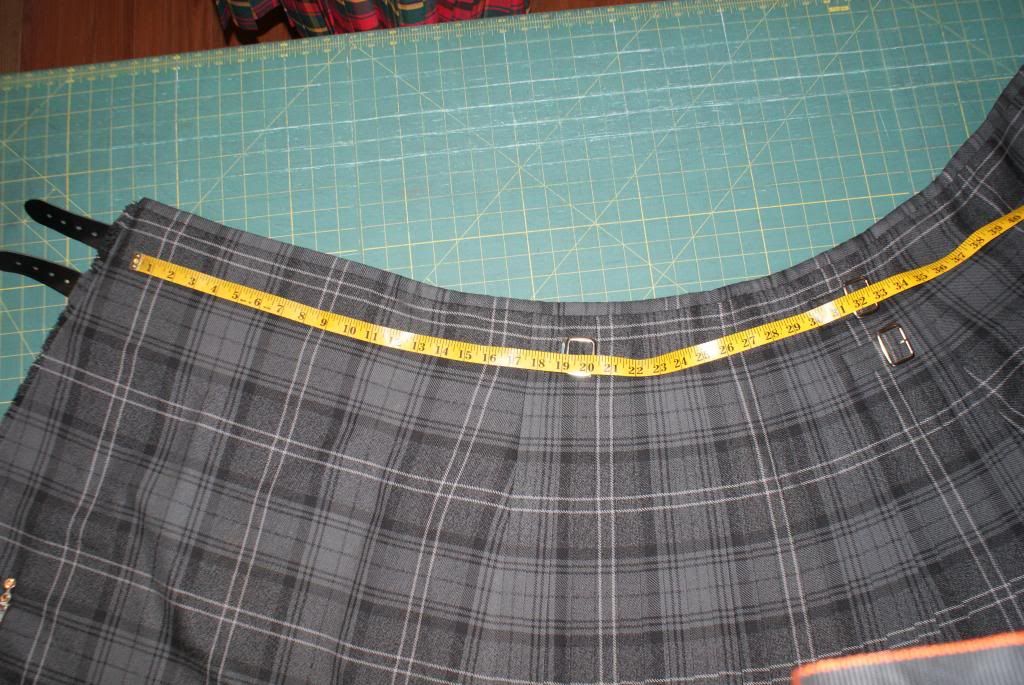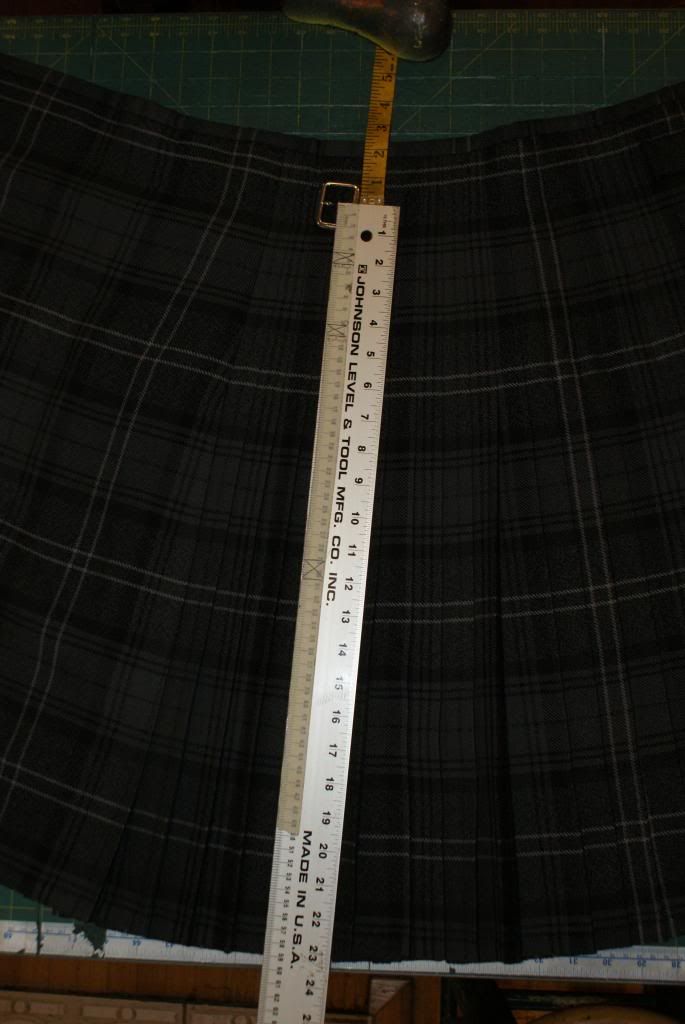I'm going to second Barb's post above and expand on it just a bit if I may.
First - You need to find out where the smallest part of your kilt is. This is at the center of the top straps and buckles if the kilt is made as a full traditional style kilt.
OK, how do you tell? Simply fold the kilt in half and look at the back of the kilt where the pleats are sewn down. Do you see some reverse flare at this point?
Here is my full traditional style Tewksbury kilt. You can plainly see the reverse flare above the top buckle.
This is where you take your measurements from.
Now measure from the outer apron or fringed edge across the apron - across the sewn-down pleats - to the edge of the under apron. No not measure the under apron. This is the waist measurement of the kilt.
Is this your waist size when you measure yourself up, above your naval right under the ribs? This is the location of your anatomical waist and is where a Traditional style kilt will cinch the top straps and buckles into.
OK, still with me? Now take a length measurement from your anatomical waist down to the top of your kneecap. This is your traditional kilt length measurement.
Now, back to your kilt. With a tape measure or even better a yardstick. Measure the length of the kilt from the center of the top buckles and straps, down to the hem of the kilt. This is the "drop" of the kilt.
Are the drop of the kilt and your traditional kilt length the same? If they are, this kilt will fit you. If not go find another kilt. There is simply no fabric you can use to lengthen the kilt. As Barb said there is no hem to let down and there is nothing hidden at the top under the waistbanding.
Sorry to be the bearers of bad news but a 22 3/4" long is probably going to be too short. I am exactly 6' tall and my Tewksbury kilt in the pictures above has a drop of 23" with a rise of 2" above that for a total length of 25".


















Bookmarks